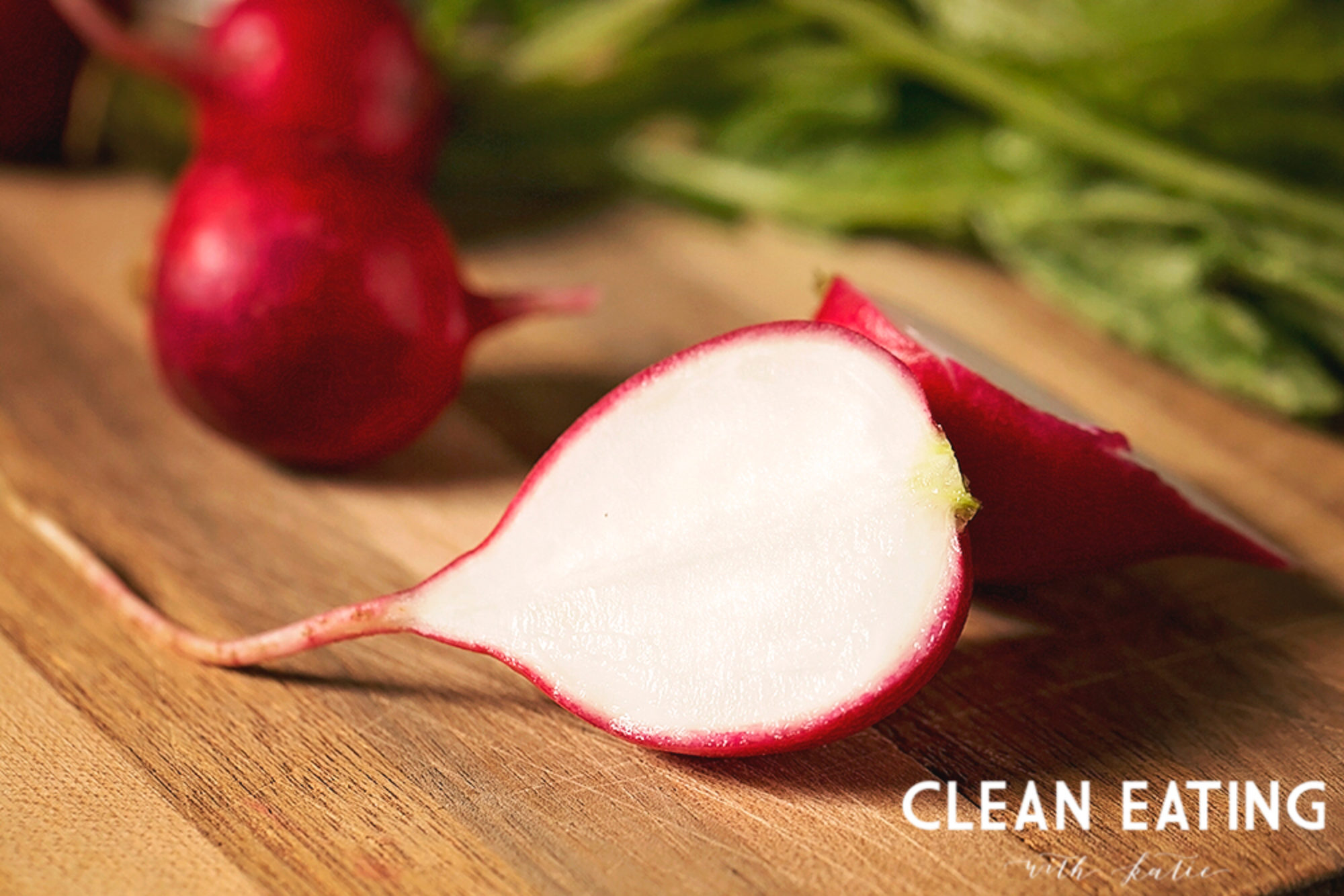Three years ago t oday. Three years ago, I first discovered my lump. I recently shared my story with Tanya West of Go With West and she is featuring it on her blog. You can find it here: http://www.tanyawest.ca/survival-stories/Katie-leadbetter/
oday. Three years ago, I first discovered my lump. I recently shared my story with Tanya West of Go With West and she is featuring it on her blog. You can find it here: http://www.tanyawest.ca/survival-stories/Katie-leadbetter/
The 52 New Foods Challenge – Pomegranates
This is the FINAL post for The 52 New Foods Challenge! WOW! It has taken me MUCH longer that 52 weeks to blog about this, but hey, I stuck with it!!
Pomegranates are a fruit that I didn’t really eat until I was an adult. I loved buying the ready-to-go pomegranate seeds at Trader Joe’s! So easy! They are quite a fun snack, although they are a bit of work when you buy the whole fruit. I also enjoy adding pomegranates to salads. The seasonal Thanksgiving salad that I mentioned here, also had pomegranate seeds. Danielle Walker of Against All Grain adds them to a Brussels sprouts dish, which adds a delightful twist.
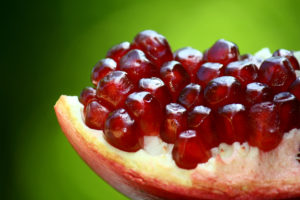 Jennifer Tyler Lee suggests making a sauce using pomegranates instead of cranberries or add them to a wild rice and pistachio dish. Both sound delicious!
Jennifer Tyler Lee suggests making a sauce using pomegranates instead of cranberries or add them to a wild rice and pistachio dish. Both sound delicious!
Food Facts:
- Pomegranates are thought to be the forbidden fruit in the Garden of Eden, rather than apples.
- They originate from Iran.
- The red seeds are called arils.
- Pomegranates are a good source of vitamins K, E, and B6, and folate, potassium, manganese, and pantothenic acid.
- Rich source of antioxidants, especially tannins and flavonoids.
- Studies show that pomegranate juice can inhibit the growth of breast, prostate, colon, and lung cancers.
- Pomegranates have been shown to be heart protective, as it can improve blood pressure and improve blood flow.
From:
The 52 New Foods Challenge by Jennifer Tyler Lee and Superfoods
by Tonia Reinhard.
The 52 New Foods Challenge – Rainbow Carrots
Carrots are generally quite the crowd pleaser for kids and adults alike. Although I can imagine that it could be tricky to get kids to eat rainbow carrots. I have always liked carrots raw but only recently in the last few years have I really learned to love roasted carrots too. Jennifer Tyler Lee also recommends roasted carrots, but she also recommends a fresh carrot salad which also sounds delicious!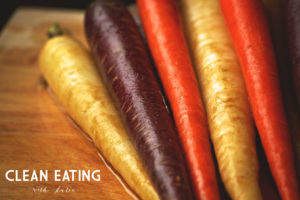
Food Facts:
- The ancestors of our modern carrots came from Afghanistan and were purple.
- During the cultivation of carrots, two mutant varieties began appearing – white and yellow.
- Orange carrots were not seen until 400 years ago when breeders crossed a red and yellow carrots.
- Purple carrots contain nearly TWENTY times the amount of phytonutrients as orange carrots.
- Baby carrots should be avoided whenever possible. They are not actually “baby carrots”, rather they are carrots that have been whittled down. The outer layers that have been peeled off contain the most nutrition
- Carrots are sweetest and freshest when the green tops are still attached.
- However, if you do not plan on using the carrots within a day or two of purchase, remove the tops, as the carrots will remain firm and fresh longer. They will also retain their moisture longer.
- Frozen carrots are not as nutritious as fresh carrots.
- Carrots are more nutritious when cooked!!
- Sautéing or steaming carrots retains more nutrients than boiling carrots.
- Whole cooked carrots contain more cancer-fighting compounds called falcarinol than carrots that have been cut before cooking.
- Eat carrots with some fat! Carrots are rich in beta-carotene, which is a fat-soluble vitamin.
- Carrots have a low respiration rate.
- The anthocyanins in purple carrots have been shown to support a healthy liver in rodent studies.
- Good source of fiber.
- Good source of vitamins K, C, and B6, potassium, thiamine, and biotin.
Sources:
The 52 New Foods Challenge by Jennifer Tyler Lee, Encyclopedia of Healing Foods
by Michael Murray, Joseph Pizzorno, and Lara Pizzorno, and Eating on the Wild Side
by Jo Robinson.
Photo Credit:
The 52 New Foods Challenge – Cauliflower
Cauliflower is one of my favorite veggies. This is another childhood favorite. My mom steamed it with butter and if you put butter on veggies, I’ll eat it. Now I love cauliflower roasted in butter. It’s simple and delicious. I also love cauli mash (instead of potatoes), cauli rice (here’s one of my favorite recipes), and cauli alfredo. It’s such a versatile veggie AND it’s good for you!!!
Jennifer Tyler Lee suggests that folks try roasted caulitflower – especially the purple variety or use a yogurt dip for raw cauliflower.
Food Facts:
- Member of the Brassica/Cruciferous family.
- White cauliflower is rich in glucosinolates, an important antioxidant.
- Colorful varieties contain even more antioxidants than white cauliflower. For example, purple cauliflower, the graffiti variety, has two and a half more times the antioxidants than white cauliflower.
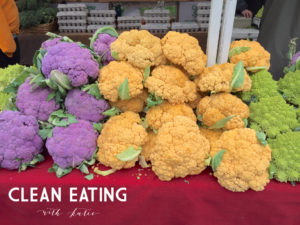
- It is believed that the white variety is actually an albino mutant from the more colorful varieties.
- For fresh cauliflower, look for:
- bright green leaves
- no spots, speckles, or bruises
- no traces of grey mold
- It can be stored for about week in the fridge without compromising the nutrient value.
- Steaming or sautéing the cauliflower will retain the most nutrients. Avoid boiling cauliflower.
- Opt for fresh over frozen for the most nutrition.
- Good source of vitamins B6, C, and K, folate, potassium, maganese, and omega-3 fatty acids.
- Good source of fiber.
- Due to its sulforaphane content, it is veggie that is great for the liver.
- Contains many anticancer properties.
Sources:
The 52 New Foods Challenge by Jennifer Tyler Lee, Encyclopedia of Healing Foods
by Michael Murray, Joseph Pizzorno, and Lara Pizzorno, Superfoods
by Tonia Reinhard, and Eating on the Wild Side
by Jo Robinson.
The 52 New Foods Challenge – Brussels Sprouts
B R U S S E L S S P R O U T S ! ! ! ! ! ! ! Hopefully that conveys my excitement for this fall and winter veggie. I could seriously have them nearly every day and still love them. But it wasn’t always that way. The first time I had Brussels sprouts was at my step sister’s wedding in 2009. I had avoided them for all of my childhood and well into my twenties. At the wedding, they were pretty boring, so I didn’t add them to my list of new favorites just yet. Then in 2010 I began working for Tomatero Organic Farm and in the fall we had Brussels. So I bought some and found a recipe in a cookbook for how to prepare them (roasted in butter and topped with bacon). And you know what? I LOVED them. From there on out, I was hooked!
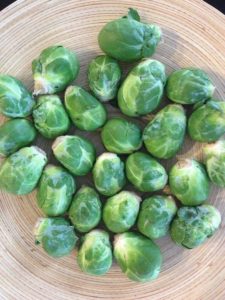
Danielle Walker of Against All Grain has a great recipe and I have created my own favorite recipe too. Look for it soon! Jennifer Tyler Lee suggests Brussels Sprouts Chips, which surprisingly, I have yet to try! She also suggests roasting them with bacon [this is a very common way they are prepared] and also sautéed with lemon and walnuts.
VEGGIE TIP: If you aren’t on the Brussels bandwagon yet, it’s probably because these are DENSE little veggies and if not cooked through to the center, they aren’t very tasty. Using a food processor, try grating them or slicing them (my favorite). Now they will be cooked through and it won’t take an hour to chew them.
Food Facts:
- Member of the brassica/cruciferous family.
- Sinigrin and progoitrin and the bitter chemicals that are responsible for some folks distaste of Brussels sprouts.
- Brussels kill more human cancer cells than any other member of the cruciferous family.
- When shopping for brussels:
- It’s important to buy them in season for less of a bitter flavor.
- Brussels should be bright green with densely packed leaves.
- Frozen Brussels have only 20% of the caner-fighting compounds as fresh Brussels.
- Like broccoli and artichokes, Brussels respire rapidly, so refrigerate immediately and eat as soon as possible.
- Steaming Brussels for 6-8 minutes will help them to retain the most nutrients (although that’s not how I like to cook them).
- Great source of vitamin B6, C, and K, folic acid, beta-carotene, thiamine, and potassium.
- Rich in fiber.
- Contain the antioxidant, glucosinolates, that help to fight cancer.
Sources:
The 52 New Foods Challenge by Jennifer Tyler Lee, Eating on the Wild Side
by Jo Robinson, and Encyclopedia of Healing Foods
by Michael Murray, Joseph Pizzorno, and Lara Pizzorno.
Hearty Turkey, Vegetable, and Lentil Soup
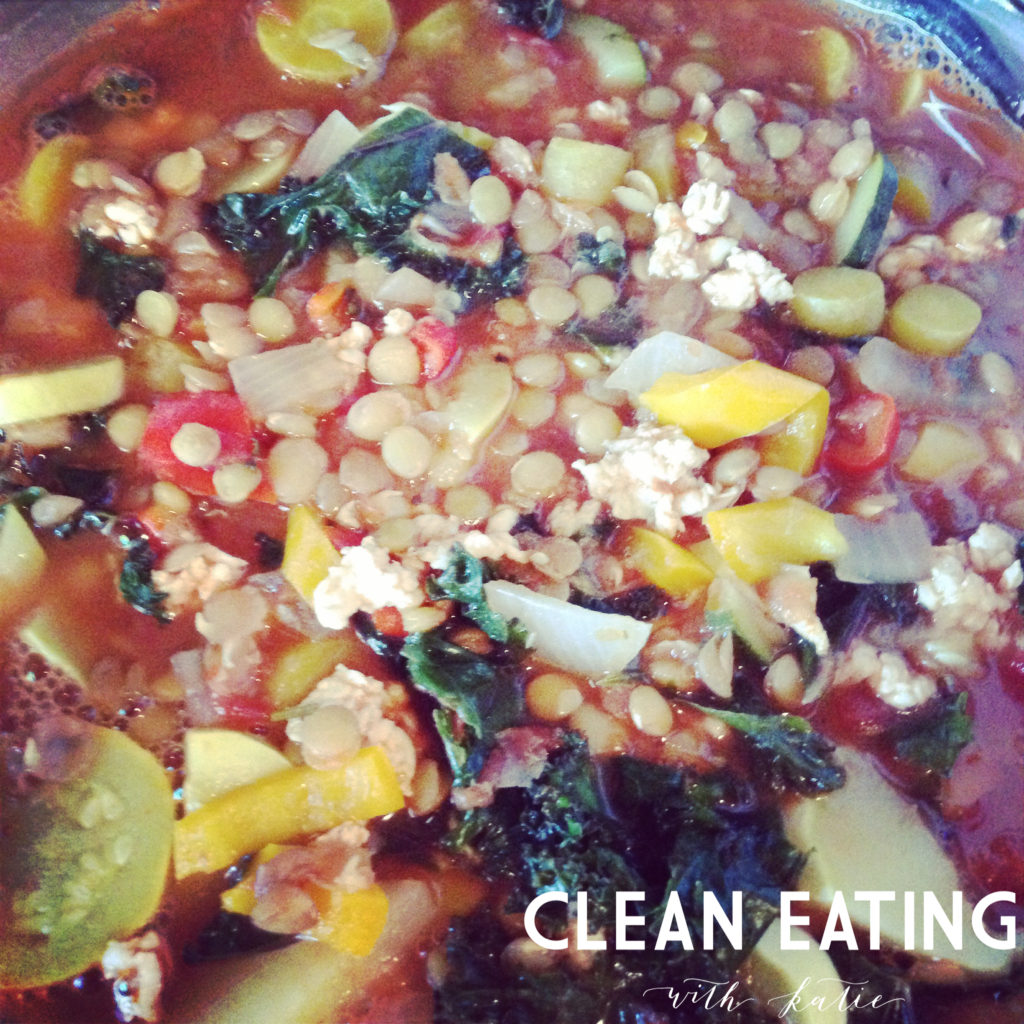
This soup was created with liver health in mind. Midway through my chemotherapy treatment for Breast Cancer, my liver enzymes were too elevated to continue treatment. We had to postpone treatment for at least one week to make sure that my liver was healthy enough to process the chemotherapy. At that time I was in school to become a Nutrition Consultant and I knew there were things that I could do to “Love my Liver”, so I went home and made some BIG changes to my diet for that week and well, IT WORKED! I went back the next week and my enzyme levels were low enough to continue with chemotherapy. Here is one of the recipes that I made for the “Love my Liver” week.
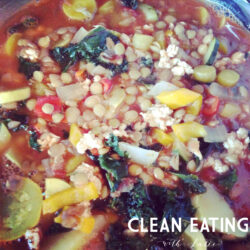
Hearty Turkey, Vegetable, & Lentil Soup
Ingredients
Soup Ingredients
- 1½ cups green lentils soaked overnight
- 1 jar diced tomatoes
- 24 oz bone broth chicken or turkey
- 2 tbsp grass-fed butter
- 1 med. onion diced
- 3 cloves garlic minced
- 3 small summer squash diced
- 1 bell pepper diced
- 6 med carrots diced
- 6 kale leaves destemmed and coarsely chopped
- 1 lb pasture-raised ground turkey
Spices
- ½ tsp dried basil
- ½ tsp dried rosemary
- ½ tsp dried oregano
- ½ tsp dried thyme
- 1 bay leaf
- sea salt to taste
- fresh ground pepper to taste
Instructions
- Rinse lentils and let soak overnight. Rinse again until water runs clear before adding to the stock pot.
- In a stock pot, sauté onions and garlic in butter. Add broth, tomatoes, lentils, and all veggies except the kale to the pot. Then add ground turkey and stir.
- Bring to a boil and then reduce heat to a simmer. Continue simmering for 30-35 minutes. Add kale and cook for about 5-10 more minutes. Serve and enjoy!
7/12/14
TeamKLB,
Second round of chemo is going a bit better than the first so far. Definitely tired, but maybe a bit less tired than before. Or maybe I’m just used to having less energy? Hair shaving party went well. It was a very emotional day for me, and considering that I’m quite the crier, I didn’t cry too much. 😉 I definitely had some second thoughts about whether to have the party. I had a lot of anxiety leading up to the party, but in the end, it was the right decision for me to be surrounded by #teamklb. I felt loved and supported and it was easier for me show my bald head to world after showing it to y’all first. Thanks to those of you who made it, and to those of you that were there in spirit. It tr uly means a lot. My hairstylist came and did my makeup first, which I think was a good decision for me. Thanks Laura! A good friend of mine took photos for me. Thanks Vanessa! Thanks for the food, the positive energy, and the gifts that I continue to receive – you are all too generous! I appreciate you all more than you will ever know.
uly means a lot. My hairstylist came and did my makeup first, which I think was a good decision for me. Thanks Laura! A good friend of mine took photos for me. Thanks Vanessa! Thanks for the food, the positive energy, and the gifts that I continue to receive – you are all too generous! I appreciate you all more than you will ever know.
I recently read Anticancer, by David Servan-Schreiber. Highly recommended by the way! He helps to bridge the gap between what your doctors are telling you and what they aren’t telling you – like what you can do to help yourself. This is what people diagnosed with a disease want to hear – give me some control and power when I feel like I have no control and no power over this situation. He is an MD and a PHD and a two time brain cancer survivor- so this isn’t quackery here! Main recommendations: 1) eat a diet similar to what we already eat – lots of plants, quality meats, low sugar, low refined carbs, low poor fats, 2) meditation 3) support groups, 4) exercise. This brings me to my “favors”. One, there are two support groups that I’d like to attend, but they’re on Tuesday nights in Palo Alto and I’m not driving much these days. If you’re interested and free on the first and third Tuesdays, let me know and we can talk details. Two, I’m interested in trying to go for a walk everyday -30 minutes is recommended, and I’d like a buddy to help me get motivated to get out when I’m feeling tired and to be there on the walks with me just in case I’m not feeling good and I don’t want to be far from home and alone. I’m thinking evenings to avoid the heat and sun (chemo drugs and sun don’t mix well). Again, hit me up if you like to be a regular walking buddy or an occasional buddy. I’m open to whatever.
Again, #teamklb, I’m eternally grateful.
Xoxoxo,
Katie
The 52 New Food Challenge – Okra
Jennifer Tyler Lee has found something that I almost never eat; I believe I have had it once or twice. I don’t think okra is very common out here in California but I know I have seen it in some Indian dishes. It’s not that I don;t like it, but since it isn’t very common I haven’t sought it out much. Jennifer Tyler Lee recommends sautéing it with garlic or making an Okra Risotto. I love risotto, so I’m supporting this option!
Food Facts: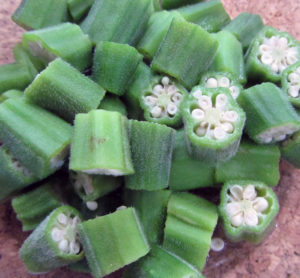
- It originated in Africa and migrated to the Mediterranean.
- It is a mucilaginous veggie which some folks like and other detest.
- Good source of vitamins A, B6, C, and K, folate, niacin, riboflavin, manganese, calcium, magnesium, copper, and potassium.
- Good source of fiber.
- It contains the antioxidants beta-carotene, lutein, and zeaxanthin.
- Studies have shown that the seeds in okra may help reduce the risk of prostate cancer.
- In mice studies, the antioxidants helped to reverse cognitive deficits that were due to nerve damage.
- Cooking okra does not lessen the nutrient value.
- Younger okra pods are less mucilaginous.
From The 52 New Foods Challenge by Jennifer Tyler Lee and Superfoods
by Tonia Reinhard.
The 52 New Foods Challenge – Flax Seeds
Flax seeds are up next and I’m happy to report that I like flax seeds and I eat them regularly. They have a host of health benefits , but most people do not properly prepare them, and therefore do not get to capitalize on their health benefits. Read on for how to properly prepare flax. Jennifer Tyler Lee recommends adding ground flaxseeds to homemade granola bars or to strawberry-banana smoothies. In the food facts, I’ll add some precautions about using ground flaxseeds in these manners.
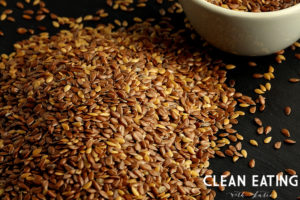 Food Facts:
Food Facts:
- Flax seeds are a good source of fiber.
- High in vitamin B6, thiamine, magnesium, phosphorus, folate, calcium, potassium, iron, zinc, and copper.
- They are also a good source of alpha-linolenic acid and phytoestrogens known as lignans. These have been shown to help prevent cancer and heart disease.
- Flax have been shown to protect against prostate cancer.
- Highest plant sources of omega-3 oils
- Benefits heart, arteries, skin, hair, & brain
- Great for your gut & constipation
- Antioxidant rich
- Protects against breast & colon cancers
- Create a mucilage when soaked in liquids (similar to chia seeds)
- Their densely packed nutrition cannot be accessed if not properly prepared. The body simply cannot digest, and therefore take advantage of, the nutrients housed in whole flaxseeds.
- You can grind them yourself if you have a Vitamix 32-ounce Dry Grains Container for a Vitamix Blender, or something similar. You can also buy them already ground, BUT the container should be opaque and there should be an expiration date that is fairly soon (a couple of months). They should be stored in the fridge (as with all raw nuts and seeds).
- You can also soak whole flaxseeds in liquid. This will increase their absorption. If you plan to add them to your yogurt, I suggest that you add them the night before. If you plan to add them to a smoothie, add them to whatever liquid you use in the smoothie the night before and allow them to soak overnight.
- I’m still on the fence about baking with them. Because Omega-3s are a fragile fat (heat-sensitive) I worry about baking with them. But I also know that while the oven gets fairly warm, the internal temperatures of baked goods doesn’t necessarily get to the oven temp. My current opinion is: if you bake with them, the oven temp should be 325-350 maximum and don’t eat them in baked goods all that often.
- Flaxseed oils should always be cold pressed, purchased in opaque bottles, and should be refrigerated.
- Be sure to never heat flax oil to avoid oxidation!
- Flaxseeds contain a moderate amount of oxalate, so those with a history of oxalate containing kidney stones should watch their consumption.
From Bauman College lecture notes, The 52 New Foods Challenge: A Family Cooking Adventure for Each Week of the Year, with 150 Recipes, by Jennifer Tyler Lee, Superfoods: The Healthiest Foods on the Planet, by Tonia Reinhard, and Encyclopedia of Healing Foods by Michael Murray, Joseph Pizzorno, and Lara Pizzorno.
Photo Cred: Luv Kreativ Photography
The 52 New Foods Challenge – Cherry Tomatoes
It’s no secret, I’m not a fan of raw tomatoes. I’ve never liked them. In fact, I’m the black sheep of the family in regards to my dislike of tomatoes. With that being said, I believe that one day I will love raw tomatoes [growth mindset]. I do like cooked tomatoes of all kinds (except ketchup, yuck!). I am starting to like heirloom tomatoes in a caprese salad. I think the reason I don’t really like tomatoes is because of their strong flavor – it totally changes the taste of a burger, sandwich, or salad. Jennifer Tyler Lee and I are kindred spirits in this way. 🙂 The other fact that helps me feel justified in not liking raw tomatoes is that unless it’s summer, tomatoes are either grown in greenhouses or internationally, or are grown in Florida (Florida’s “soil” is actually just sand and is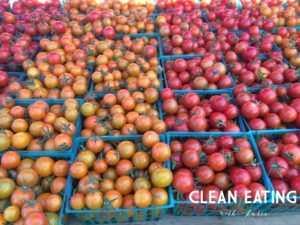 void of nutrients). So unless they are garden tomatoes or farmer’s market tomatoes, they are often mealy and are picked when green. The book Tomatoland: How Modern Industrial Agriculture Destroyed Our Most Alluring Fruit is fascinating. Highly recommended! Anywho… Jennifer Tyler Lee recommends roasted tomatoes, tomato sauce, and tomato pops! I recently made a cherry tomato chutney at a Sur la Table cooking class – it was delicious!
void of nutrients). So unless they are garden tomatoes or farmer’s market tomatoes, they are often mealy and are picked when green. The book Tomatoland: How Modern Industrial Agriculture Destroyed Our Most Alluring Fruit is fascinating. Highly recommended! Anywho… Jennifer Tyler Lee recommends roasted tomatoes, tomato sauce, and tomato pops! I recently made a cherry tomato chutney at a Sur la Table cooking class – it was delicious!
Food Facts:
- They are technically a fruit!
- Tomatoes belong to the nightshade family (along with potatoes, eggplant, peppers- all kinds, and some spices). Nightshades are known to be inflammatory. Nightshades are commonly removed during a 5-R Protocol to determine food intolerances.
- There are over a THOUSAND different types of tomatoes and can be a variety of shapes, sizes, and colors.
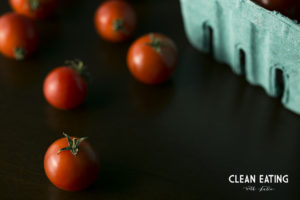
- Native to South America.
- The leaves of the tomato are toxic. It was long believed that tomatoes were poisonous because they belong to the nightshade family which houses other poisonous plants (poisonous nightshade and black henbane).
- Great source of vitamins B6, C, and K, carotenes (especially lycopene), beta-carotene, biotin, folic acid, pantothenic acid, niacin, and fiber.
- Lycopene content is FIVE times greater in cooked tomatoes because cooking causes the cell walls to burst and “free” the lycopene. Also, the redder and riper the tomato, the more lycopene content.
- Lycopene in particular has been shown to protect against cancers of the breast, colon, lung, skin, and prostate. Additionally, it has been shown to lower the risk of heart disease, cataracts, and macular degeneration.
- Highest levels of vitamin C can be obtained from raw tomatoes.
- Fully ripe tomatoes cannot be shipped long distances. Therefore they are picked when underripe and then gassed with ethylene. You probably know what I’m going to say here….buy them at a local farmer’s market, CSA, or grown your own!
- Cherry tomatoes have more lycopene per ounce and are sweeter and more flavorful than their larger counterparts. Smaller is better!
From The 52 New Foods Challenge: A Family Cooking Adventure for Each Week of the Year, with 150 Recipesby Jennifer Tyler Lee, Eating on the Wild Side: The Missing Link to Optimum Health
by Jo Robinson, Superfoods: The Healthiest Foods on the Planet
by Tonia Reinhard, and Superfoods: The Healthiest Foods on the Planet
by Michael Murray, Joseph Pizzorno, and Lara Pizzorno.
